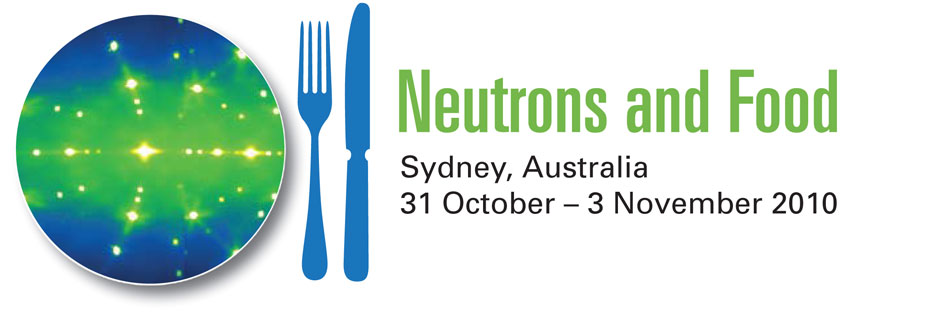
- Homepage
- Photos
- Committees
- Program and Abstract Book
- Invited Speakers
- Notes for Presenters
- Accommodation
- Travel and Sightseeing
- Workshop poster
- Financial support
- Sponsorship
In case of technical problems with these pages please inform the webmaster.
Last Update: 26/01/2011
Invited speakers: Short Biography
- Rex Hjelm, LANSCE, USA
"Bile Physiology and Physical Chemistry in Digestion: Fundamental Insights from Small–angle Neutron Scattering" - Carl Holt, University of Glasgow, United Kingdom
"Quantitative models of casein micelle structure derived from SAXS and SANS" - John Katsaras, NRC, Chalk River, Canada
"Neutron Scattering, Hydrogenous Materials and Nutraceuticals" - Susan Krueger, NIST, USA
"Protein structure and interactions in the solid state" - Ross Lee, PTIS, USA
"Need for neutron scattering techniques in packaging" - Peter Lillford, University of York, United Kingdom
"Neutrons and Food: What are the problems?" - Camille Loupiac, Université de Bourgogne, France
"Protein structure (SANS), water and protein dynamics (Elastic and Inelastic Neutron Scattering), and protein–lipids interface (Neutron Reflectivity). How neutron scattering experiments can target the behaviour of model food proteins?" - Hans Tromp, Nizo, The Netherlands
"Neutron scattering study of food structure: gelation, coacervation and the effect of high pressure" - Aude Vernhet, INRA, France
"Colloidal interactions involving condensed tannins in diluted systems: what problems can we solve through SANS?" - Elliot Gilbert, ANSTO, Australia
"Neutron Scattering — A Natural Tool for Food Science and Technology Research"

Rex Hjelm is Senior Scientist Los Alamos National Laboratory where he holds positions at the Los Alamos Neutron Science Center and the Institute for Multiscale Materials Studies. He is also an Adjunct Professor of Chemical and Environmental Engineering, University of California, Riverside. He has 135 published articles and 146 invited presentations in biophysics, physics, materials science, colloids and polymers, scattering instrumentation and methods and computer code development. He has edited major reports in neutron scattering facility instrumentation and neutron scattering instrument design and edited three volumes on composite polymer materials. Hjelm received a Bachelor of Science in Genetics, Summa Cum Laude from the University of California, Berkeley and a Ph.D. in Biology/Biochemistry from the Johns Hopkins University where he was a Predoctoral Fellow of the National Science Foundation. His dissertation was on optical activity studies of the conformations of chromosomal proteins and nucleic acids. Hjelm was introduced to neutron scattering techniques as a Jane Coffin Childs and NATO Postdoctoral Fellow at Portsmouth University (UK) and the Institut Laue Langevin (France) where he made one of the first determinations of the arrangement of proteins and nucleic acids in the basic chromosome unit, the nucleosome. Hjelm returned to Johns Hopkins as a Howard Hughes Fellow in biophysics and medicine where he continued work on chromosome and genome structure using the then new technique of scanning transmission electron microscopy. Subsequent to his work at Hopkins, Hjelm joined the faculty of the University of Illinois Schools of Medicine and Pharmacy concurrent with a joint appointment at Argonne National Laboratory divisions of biology and the Intense Pulsed Neutron Source where he continued studies in chromosome structure with electron microscopy and small–angle neutron scattering. It was during this period that Hjelm was first introduced to the interesting problems posed in bile physiology and lipophilic molecular transport in bile secretion and digestion and started applying small–angle scattering methods to them. Since joining Los Alamos National Laboratory, he has been responsible for the laboratory's Low–Q neutron scattering program. At Los Alamos he has lead projects in polymeric materials structure, material defects and colloids, including drug delivery and bile, using scattering methods. Currently he leads programs in viral structure, structural biology of molecular motors and the molecular response of polymers to stress using scattering and reflectometry techniques. Hjelm has been a consultant to a major pharmaceutical company and serves on the scientific advisory board of another. Hjelm has received six United States Department of Energy Defense Programs Award of Excellence in Research for his materials research and in 2009 received the United States Department of Energy, Office of Science Outstanding Mentor Award.
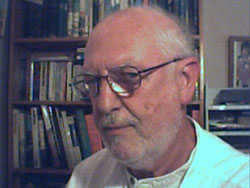
Carl Holt received a broad education and research training in physical and biological sciences which was reflected in his activities as a research scientist at the Hannah Research Institute and, latterly, at Glasgow University. At an early stage in his career he developed the hairy casein micelle model to help explain aspects of casein micelle stability and structure and, with Lindsay Sawyer, went on to introduce the concept of caseins as rheomorphic proteins. He played a leading part in the discovery and characterisation of thermodynamically stable calcium phosphate nanoclusters formed from amorphous calcium phosphate with one or more members of a group of secreted phosphoproteins or phosphopeptides, including caseins, osteopontin and fetuin sequences. These discoveries have pointed the way to a new understanding of one of the structure&ndas;function relationships among unfolded proteins and have helped to uncover a novel mechanism in the control of biocalcification. In addition to fundamental research, he has worked as a consultant to the food and pharmaceutical industries and is a named inventor on two calcium phosphate nanocluster patents.
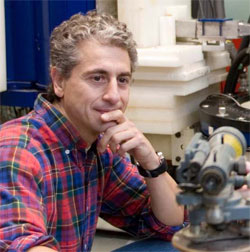
After undergraduate degrees (BA Psychology; BSc Biology) from Montreal’s Concordia University, John Katsaras proceeded to the University of Guelph for graduate studies in Biophysics under the tutelage of the late R.H. Stinson. After graduating in 1991, John accepted positions with R.M. Epand (McMaster University) as a Natural Sciences and Engineering Research Council of Canada postdoctoral fellow (McMaster University), and later on with J. Dufourcq (CNRS, France) as a Poste Rouge Fellow. In 1994 John returned to Canada to take up a position at AECL’s Chalk River Laboratories. His arrival signified the beginning of the Canadian Neutron Beam Centre’s soft materials program and the advent of an internationally recognized neutron based biomembranes initiative that has, in many ways, pioneered the application of thermal neutron scattering to lipid membrane biophysics. John is a Principal Research Officer with the National Research Council (Canada) and a Senior Scientist/Distinguished R&D Staff with Oak Ridge National Laboratory (USA).
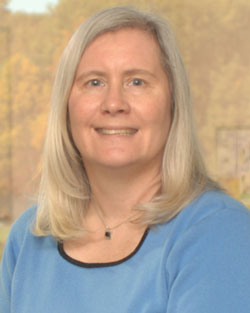
I obtained my PhD in physics from the University of Maryland in 1987 with a biophysics–related thesis. I then came to the National Institute of Standards and Technology (NIST) under a National Research Council Postdoctoral Fellowship, after which time I became a research physicist at the NIST Center for Neutron Research (NCNR). During the more than 20 years I have been at the NCNR, my research interests have centered on structural studies of biological macromolecules in solution using both Small–Angle Neutron Scattering (SANS) and neutron reflectometry techniques. I developed a SANS data acquisition software interface that served the SANS program for over 15 years and I took the lead in developing an improved neutron reflectometry technique for the study of single lipid bilayer systems supported on planar substrates. In recognition of my work, I have earned the Department of Commerce Silver Medal and the NIST Bronze Medal and I was elected a Fellow of the American Physical Society. Currently, I am involved in the development of a SANS data analysis and advanced modeling software suite of programs that aims to is to bridge the gap between computational chemistry methods and the calculation of a wide variety of biological scattering experiments covering both structure and dynamics applications.
The biological systems of most interest to me for SANS studies include multi component systems such as multi–subunit proteins, protein/lipid and protein/DNA complexes, as this allows for the strategic use of neutrons by performing contrast variation experiments. I am also interested in advancing the studies of single bilayer biomimetic membranes using neutron reflectometry, the ultimate goal being to study transmembrane proteins in suitable biomimetic environments. Most recently, I have been measuring proteins in the solid state using SANS. This is an interesting area of research, as it involves areas of physics that are not usually explored when studying dilute solutions. I enjoy teaching the SANS technique, as applied to biological systems, to new and potential users and I have participated in a number of summer schools and workshops. I have served the neutron scattering community in many capacities over the years and I am currently Chair of the Neutron Scattering Science Advisory Committee, Oak Ridge, TN.
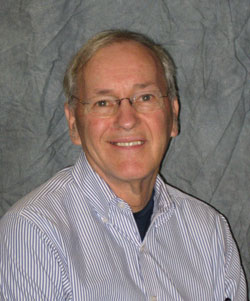
Ross Lee is an experienced technology leader with over 36 years experience with the DuPont company (retired July 2009) spanning a wide variety of technology, product and new business developments including films, resins and innovative packaging systems. Many of these developments involved nanoscale coatings, particles and characterizations. In his most recent position, at DuPont, Ross was responsible for bringing new technology to packaging through open innovation and was instrumental in developing DuPont’s alliances with Plantic, a provider of renewably sourced, thermoplastic starch for packaging and other applications, based in Victoria, Australia; and Scanbuy, a mobile enabled interactive technology provider. Ross was a recipient of DuPont’s 2008 Sustainability Excellence award.
Ross is currently a Sr. Business Associate with PTIS™ (Packaging & Technology Integrated Solutions, LLC) and an Adjunct Professor at Villanova University where he teaches green science, industrial chemistry and engineering entrepreneurship. He has a Ph.D. in Organic Chemistry from Michigan State University and a B.S. in Chemistry from the University of Rochester. Ross and his family reside in Chesapeake City, Maryland.
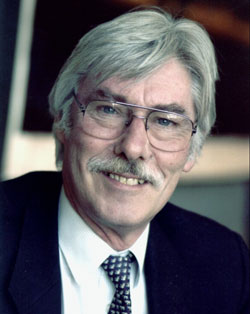
Peter was trained as a chemist at King’s College London, and after postdoctoral positions at Cornell and the San Francisco Medical Centre, joined Unilever Research where he spent most of his career. He led Basic Research in Food Physical Chemistry and Materials Science and as Chief Scientist (Foods), was also responsible for research in Microbiology and Sensory Science.
He retired in 2001 and is currently a Visiting Professor in the Biology Dept. of the University of York, and the School of Engineering in Birmingham University. He is Chairman of Governors of the Institute of Food Research (UK), and is Chairman of the UK LINK Scheme in Advanced Food Manufacturing, He has held Fellowships with CSIRO (Australia), and consults for several multinational food companies.
He was Chairman of the UK Technology Foresight Programme for Food and Drinks and is also a former President of IFST. He was awarded the Senior Medal for Food Science by the Royal Society of Chemistry: and an Outstanding Achievement Award by the European Federation of Food Science and Technology; and is a Fellow of the International Academy of Food Science and Technology, The Royal Society of Chemistry and the Royal Society of Arts. He was made Commander of the British Empire (CBE) "for services to science and the food industry".
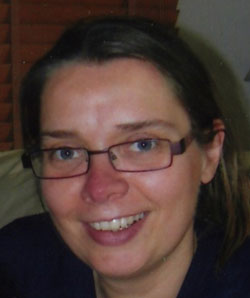
Assistant Professor at AgroSup Dijon, France
Education and Professional experiences
a. M.S., 1996 (Physical Chemistry), University of Paris 7, Denis Diderot, Paris, France
b. Ph.D., 1999 (Biophysical Chemistry) University of Paris 11, Orsay, France
c. Post–doctoral fellowship, 2000–2001, Laboratoire Léon Brillouin , Neutron Scattering Facility,
CEA-CNRS, Water and Biology group, Saclay, France
d. Post-doctoral fellowship, 2001-2003, University of Illinois at Chicago, Chicago, USA Department
of biochemistry and molecular biology.
Research Interests
Dr. Camille Loupiac obtained her PhD in Biophysical Chemistry in 1999 from the University Paris 11 (Orsay). During her PhD, she worked with Pr. Bernard Alpert and Dr. Serge Pin, in the "Laboratoire de Biologie Physicochimique" of the University Paris 7, on the structure–dynamics–function relationship of hemeproteins. She received a strong background in the application and theory of a diverse number of biophysical techniques which include: NMR and Raman spectroscopies, X–Ray and Neutron scattering, laser flash photolysis. After her doctorate, she joined the CEA, and worked at the Laboratoire Léon Brillouin with Drs. Marie–Claire Bellissent–Funel and Patrick Calmettes on the development of neutron scattering (Small Angle Neutron Scattering and Inelastic Neutron Scattering) to study proteins structure and dynamics. In 2001 she obtained a post–doctoral position at the University of Illinois at Chicago in USA in Dr. Michael Caffrey’s group. She learned more about the application of NMR spectroscopy to study protein structure and function, moreover on HIV membrane envelope proteins. There, Dr Loupiac learned new techniques in molecular biology (Segmental isotopic labeling, recombinant protein purification, mutagenesis assays). In 2003, she joined the ENSBANA at Dijon (now AgroSup Dijon), to become lecturer in food biochemistry. At the University of Burgundy, in EMMA team, she developed research on milk proteins functionalities, especially on globular proteins beta–lactoglobulin and caseins. Her main interest is to correlate proteins structural and dynamics changes to their functional properties (gels, emulsions, powders, interfaces). Key parameters are environmental stresses (pH, salt, co–solvents, high pressure, heat, freezing). Favourite observation tools are spectroscopies (FTIR, fluorescence, NMR), DSC, Light and Neutron Scattering.
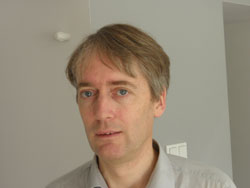
Dr. R. Hans Tromp was born in Leiden, the Netherlands, in 1963. He graduated from the Department of Physical Chemistry of University of Leiden. His thesis was an NMR study of counter ion dynamics in polyelectrolyte solutions. He had postdoc positions at the Physics Departments of the Universities of Bristol (Liquids Group of Prof. J. Enderby) and Cambridge, UK (Polymer&Colloids group of Prof. A. Donald). He was a researcher at the Institute of Food Research in Norwich, UK, before becoming a senior scientist at NIZO food research, Ede, the Netherlands. His expertise is in phase separation, gelation, texture formation and stability of food biopolymer systems. He is a part–time associate professor in the Physical and Colloid Chemistry Group at the University of Utrecht.
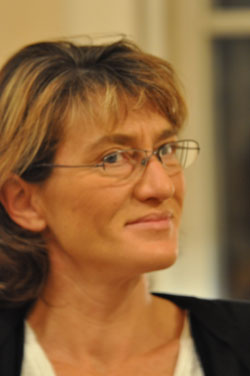
Aude was trained as a Food scientist at the High National School of the Food Industries (ENSIA–Massy) and at the University of Technologies of Compiègne. After a phD in "Enzymatic Processing, Bioconversion and Microbiology" of the University of Compiègne, she joined Montpellier SupAgro (an international center for higher education in agriculture sciences) in 1993 as a assistant professor, in the Enology teaching team. She now supervises the Viticulture and Enology specialisation of the Engineer Diploma (Master’s degree) of Montpellier SupAgro and of the "Vine and Wine" National Master.
Aude develops her research activities since 1993 in the research joint unit "Sciences for Enology" (INRA/montpellier SuoAgro/University of Montpellier I). In that unit, she is responsible for the "physico–chemical interactions" axis. Her work is mainly directed towards the physico"chemical interactions involving the wine constituents and of their impact: (i) on the colloidal stability and quality of beverages; (ii) on the efficiency of the separation and stabilization processes.
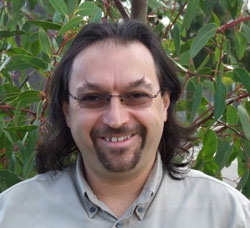
Dr. Elliot Gilbert is programme leader for Food Science research at the Australian Nuclear Science and Technology Organisation in Sydney, Australia and instrument responsible for the Quokka Small–Angle Neutron Scattering instrument.
He was born in London, completed a first degree in Chemical Physics at Edinburgh University in Scotland before moving to Australia to undertake a PhD in polymer physics. This is where he was first exposed to the idea of using neutrons to probe structure and dynamics in materials. After completing a postdoctoral fellowship with a major international company studying the formation of high–internal phase emulsions for explosive application, he subsequently became a fellow at Argonne National Laboratory in the United States where he investigated the structure of polymers in confined geometry.
He was invited to return to Australia in late 2001 to lead the project for the design, construction and commissioning of the state–of–the–art small–angle neutron scattering instrument, Quokka, at the OPAL nuclear research reactor in Sydney. This instrument, exceeding a budget of $6 million, is now one of the best facilities of its kind in the world.
Elliot's interests lie in soft condensed matter science and he has investigated such diverse areas as phase separation in paraffins, the design of biocompatible ferrofluids for medical application and the nanostructure of composite materials for aerospace but now has an increasing focus on naturally occurring materials.
Elliot devised, initiated and now leads a research group in the application of scattering to investigate fundamental and industrial problems of national significance in food materials science. One of the major outcomes from this programme thus far has been an understanding of the factors influencing the formation of resistant starch. This is a material whose intake is inversely correlated with the incidence of colorectal cancer – the most deadly non–gender specific cancer behind lung cancer and a disease for which Australia and New Zealand rank second in the world. However, the structure of resistant starch was previously not known. Dr. Gilbert's group has described resistant starch structure for the first time in terms of arrangement at the critical molecular level. He has also published the first major review of neutron scattering as applied to food–based systems in Trends in Food Science and Technology.
Dr. Gilbert (with collaborators at CSIRO and the University of Queensland) have developed a so–called Protein Syndicate – a consortium based on a successful British model in which the research providers are directly engaged with seven commercial partners across the food sector. This research assists food manufacturers understand the links between the nanostructure of protein–containing foods and their associated physical and biochemical properties, enabling them to predict and control the behaviour of raw materials and ingredients during food processing.
Apart from serving on a range of international advisory committees, since 2005, he has written submissions generating revenue of greater than $4.7 million and produced 117 publications, talks and presentations with a focus on applied research. More recently, following leading a successful international bid, he became chair of the next International Small–Angle Scattering Conference (November 2012) and is also co–chair for the "Neutrons and Food" Workshop 2010.